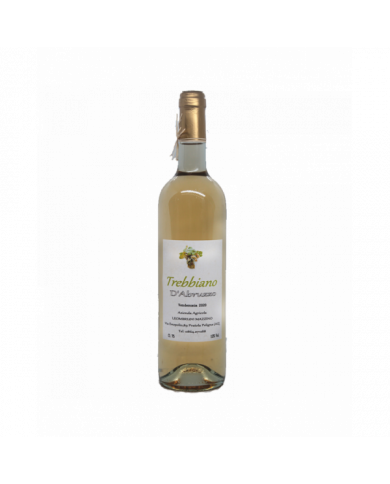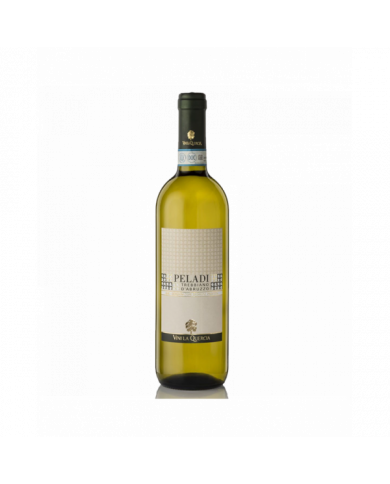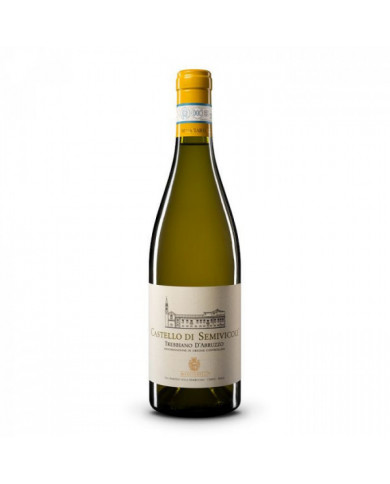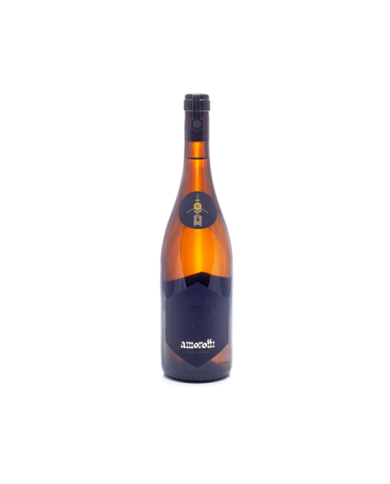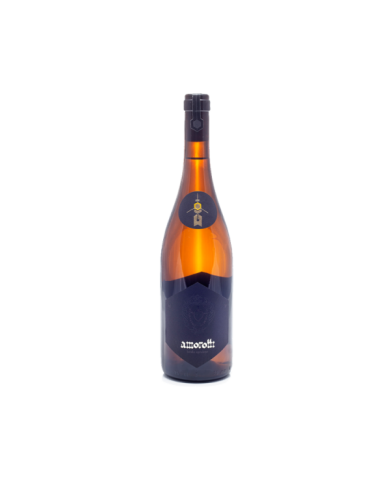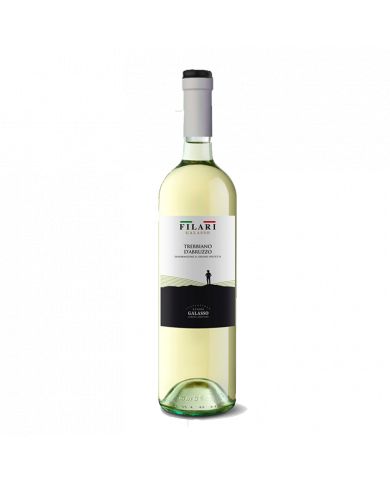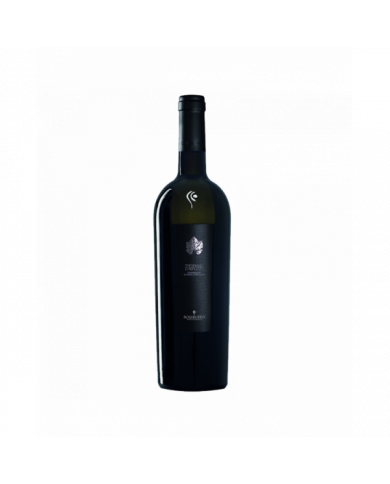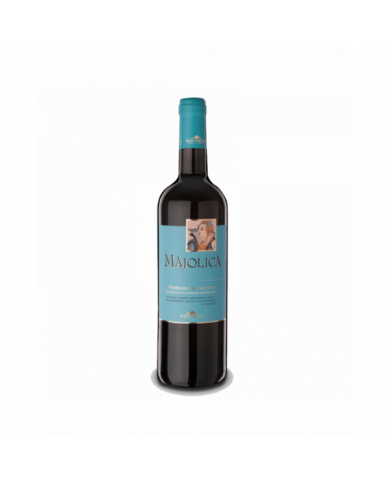Our Trebbiano d'Abruzzo Strappelli comes from a Trebbiano clone from an ancient vineyard of about 50 years. Compared to the more common Trebbiano clones, it differs for its smaller cluster. It is harvested after the first half of September, undergoes fermentation in steel vats to be finally transferred to the bottle.
Deep straw yellow color. The nose releases intense notes of acacia flowers, ripe peach, citrus and dried fruit in shell. The sip is fresh, savory and full-bodied. Excellent taste-olfactory persistence with a pleasant almond finish. Alcoholic content: 12% vol.
Deep straw yellow color. The nose releases intense notes of acacia flowers, ripe peach, citrus and dried fruit in shell. The sip is fresh, savory and full-bodied. Excellent taste-olfactory persistence with a pleasant almond finish. Alcoholic content: 12% vol.
Elegant and refined with hints of yellow fruit and white flowers. Savory taste with a slightly almond finish.
The term 'Trebbiano', according to its etymology, indicates a local village and home-made white wine that dates back to Etruscan and ancient Roman times. Today a large number of Abruzzo vines bear this name and give life to fresh and vibrant white wines. Trebbiano d'Abruzzo DOC Frentano perfectly reflects these characteristics and is excellent to accompany first courses of Mediterranean cuisine.
Ideal with white meats and fish-based dishes, straw yellow color, fresh, soft and balanced taste.
Generously sunny to the eye. Pure exaltation of the traditional autochthonous vine of the lands of Abruzzo . The permanent grassing in the vineyard enhances the character of a fruit that carries within itself the scents of the nature that surrounds it. The passing breezes at 400 meters above the estate, always directed from the nearby mountain to the sea, favor floral explosions on the nose, intoxicating sensations of freshness and inviting aromatic fragrance. On the palate it is clear, bright. The softness it expresses in the mouth is infinite, while its acid note is persuasive.
Trebbiano d'Abruzzo denomination: the complete guide
Trebbiano d'Abruzzo is a Denomination of Controlled Origin (DOC) white wine produced in Abruzzo , a region in central-southern Italy. In this article we will explore the characteristics of this wine, from its history to its production and tasting. We will also discover which dishes go best with this wine and how to store it correctly.
Trebbiano d'Abruzzo is a white wine obtained from the processing of Trebbiano grapes. Its production is permitted only in some provinces of Abruzzo and in particular in the territories of Chieti, L'Aquila and Teramo. This wine has an ancient history, but it has only recently achieved considerable popularity.
Trebbiano d'Abruzzo terroir and production
The Abruzzo region is characterized by a Mediterranean climate with mild winters and hot, dry summers. The Trebbiano d'Abruzzo terroir extends over the hills adjacent to the Adriatic Sea, which offer excellent sun exposure and a soil rich in minerals.
The grape variety used for the production of Trebbiano d'Abruzzo is Trebbiano d'Abruzzo , one of the most cultivated grape varieties in Italy. The vinification of Trebbiano d'Abruzzo takes place through fermentation at a controlled temperature, followed by a short period of aging in the bottle.
Organoleptic characteristics Trebbiano d'Abruzzo
Trebbiano d'Abruzzo has a straw yellow color with greenish reflections. Its aroma is delicate, with floral and white fruit notes. On the palate, the wine is fresh and slightly sapid, with good acidity and a slight softness. Its alcohol content varies from 11% to 13%.
The main characteristic of Trebbiano d'Abruzzo is its elegance and lightness. Thanks to the particular terroir and careful vinification, this wine manages to maintain a remarkable freshness and great aromatic finesse.
Pairing with Trebbiano d'Abruzzo food
Trebbiano d'Abruzzo goes very well with fish dishes, such as fish soup, grilled fish and oysters. Furthermore, this wine can be combined with white meat dishes, such as chicken and turkey, and with fresh and light cheeses such as buffalo mozzarella and caciocavallo.
Trebbiano d'Abruzzo is a very versatile wine that also goes well with vegetable dishes, salads and appetizers. In general, it is recommended to combine this wine with delicate and fresh dishes, but also with tasty and structured dishes.
Conservation and service of Trebbiano d'Abruzzo
Trebbiano d'Abruzzo must be served cold, at a temperature between 8┬░C and 10┬░C. To preserve the wine, it is recommended to store it in a cool, dry place away from direct sunlight. After opening the bottle, the wine can be stored in the refrigerator for a maximum of two days.
Economic notes Trebbiano d'Abruzzo
Trebbiano d'Abruzzo is a highly appreciated wine in Italy and abroad. The annual production of bottles is around four million pieces, and the average price of a bottle is around 7 euros.
Trebbiano d'Abruzzo is a delicate and fresh white wine that deserves to be discovered and appreciated. Thanks to the particular terroir and careful vinification, this wine manages to maintain a remarkable freshness and great aromatic finesse. Its versatility makes it suitable to be paired with a wide range of dishes, from fish dishes to white meat and vegetables.
FAQs
What are the provinces of Abruzzo where the production of Trebbiano d'Abruzzo is permitted?
Production is permitted in the provinces of Chieti, L'Aquila and Teramo.
What are the organoleptic characteristics of Trebbiano d'Abruzzo?
Trebbiano d'Abruzzo has a straw yellow color with greenish reflections. Its aroma is delicate, with floral and white fruit notes. On the palate, the wine is fresh and slightly sapid, with good acidity and a slight softness.
What are the vines used for the production of Trebbiano d'Abruzzo?
The grape variety used is Trebbiano d'Abruzzo , one of the most cultivated grape varieties in Italy.
What is the average price of a bottle of Trebbiano d'Abruzzo?
The average price is around 7 euros.
What dishes does Trebbiano d'Abruzzo go best with?
Trebbiano d'Abruzzo goes very well with fish dishes, white meat, fresh and light cheeses, but also with vegetable dishes, salads and appetizers.


